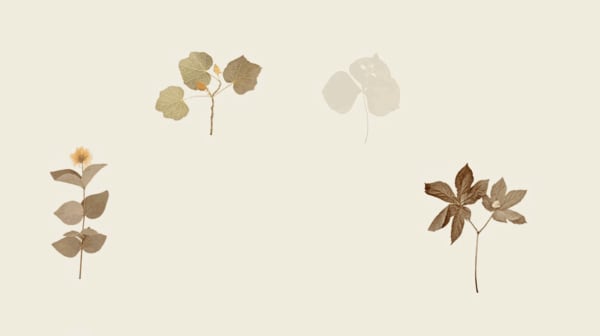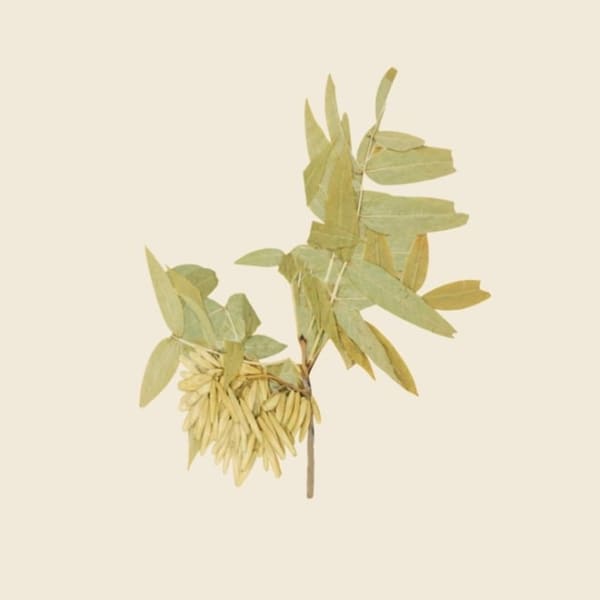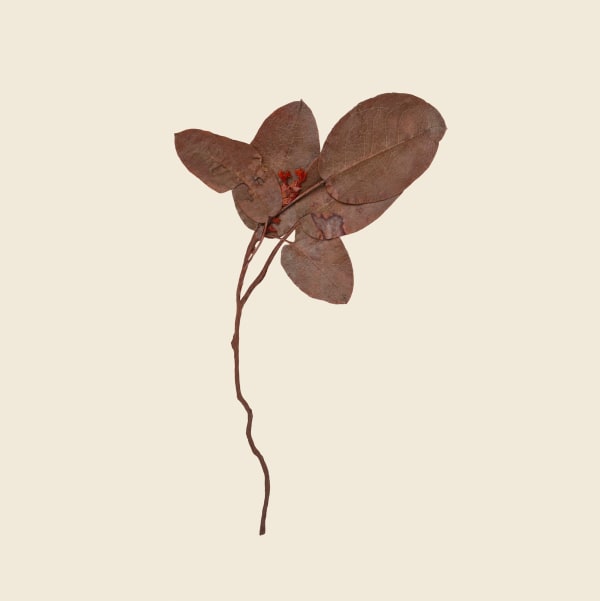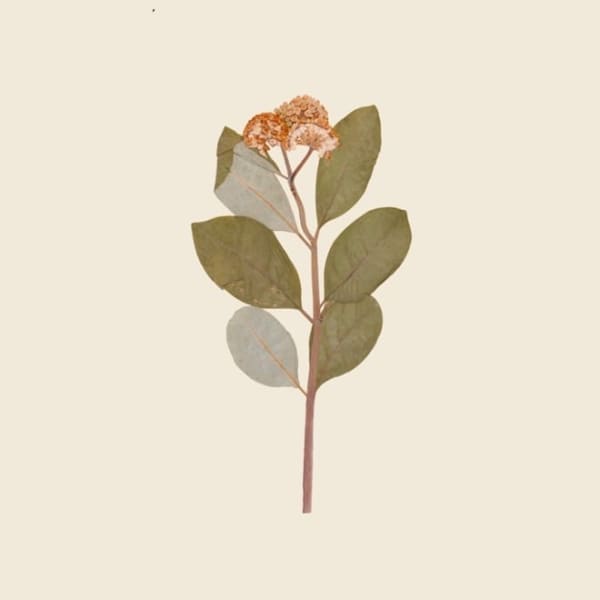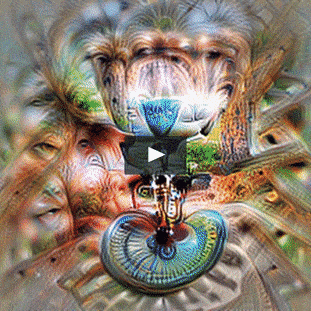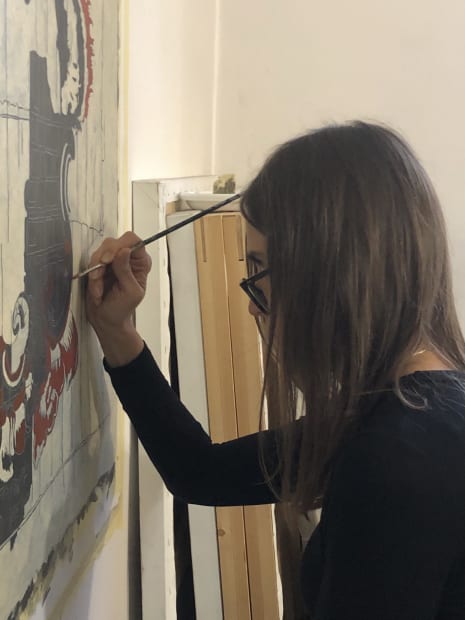-
Debora Hirsch: Herbaria
Download Press release of herbaria (2024)
download exhibition catalogue of herbaria (2024)
Download Checklist of HERBARIA (2024)
When Albert Eckhout (1610–65)—court painter to Dutch governor-general Johan Maurits—set off for Northeast Brazil in 1636, it was his first venture outside of the Dutch Republic. Maurits, with whom Eckhout traveled, had a particular interest in natural history, and it would be Eckhout’s duty to capture the astonishing natural resources and general fecundity of seventeenth-century Dutch Brazil through his art. During the seven years that Eckhout would reside in Brazil, he created hundreds of drawings and oil studies that he would later use to paint exquisite still lifes. The excitement and allure of Eckhout’s initial encounters with untamed Brazilian flora seep from these paintings; his gleaming green coconuts, ripe melons, and luscious cashew apples convey a freshness and bounty that beckons to viewers, eliciting astonishment and encouraging them to taste and experience such exotic abundance for themselves. At the same time, paintings of the colony’s natural resources asserted the power and status of the Dutch Republic and its governor-general among the seventeenth-century aristocratic elite; the works created by Maurits’s court painters were given as gifts and ended up in the collections of King Frederik II of Denmark and Louis XIV in France, among others.[i]
Colonial conceptions of the natural world are embodied not just in the paintings of European travelers, but also in the collections formed by traveling biologists. The students of the Swedish biologist Carl Linnaeus (1707–78), for example, voyaged across the globe gathering plant species and naming them according to European systems of knowledge. The preserved specimens that these biologists amassed would, in many cases, form the basis of institutional herbaria that today continue to mirror asymmetrical power structures; the majority of plant specimens collected from the tropics—where, significantly, the most plant diversity naturally exists—are now housed in Europe and the United States.[ii] These botanical resources are perhaps even more crucial now than they once were; they can be used, for example, to understand the progress of invasive species, or to help guide conservation planning.
Brazilian-born artist Debora Hirsch, whose work directly addresses the legacies of both Eckhout and imperial biologists, interrogates the belief that humans have dominion over nature, and a right to exploit biological resources for their own gain. In her subtle yet profoundly insightful series Herbaria (2024), Hirsch presents images of pressed plants, mostly native to New York State, that are in varying stages of disappearance due to human interventions. In her video animation HERBARIA (2024), fragile petals, paper-thin leaves, and lithe stems flutter briefly in undefined space, almost assuming anthropomorphic qualities, before fading to white—a reminder that these species will soon only exist in memory. Hirsh often incorporates plants found in the regions where she exhibits, and thus calls for a reassessment of how we interact with—or utterly disregard—our immediate natural surroundings.
Hirsch’s focus on what has been lost through nature’s colonization extends to her evolving project PLANT (2023 – ongoing), which explores the aesthetic and ethical dimensions of extinction while questioning art’s ability to preserve memories and specimens. Hirsch employs artificial intelligence to create her PLANT works, using a pretrained model that she fine-tunes with her own proprietary datasets to generate myriad images reflecting her subject and painting style, which she then distills into a single work. This fruitful employment of cutting-edge technology results in sumptuous compositions whose interdependent elements reflect the complex and fragile habitats that sustain biodiversity. Hirsch records her PLANT works on the blockchain, which she interprets as a “metaphorical counterpart to the physical herbarium”—a permanent, immutable database capable of preserving the endangered species that she represents. While Hirsch’s portrayals of blooms, birds, and baroque scrolls perhaps hark back to Eckhout’s sensuous flora and fauna—one can nearly feel the velvety petals of the blossoms centered in her prints—here, sensuality draws our attention to potentially devastating losses, rather than New World wonders to be gained. Hirsch invites viewers not to fetishize the unknown, but to savor what may, very soon, be impossible to experience in the wild.
Works from the Herbaria and PLANT series are not the first in which Hirsch has addressed the processes and outcomes of colonialism. The artist’s Firmamento paintings (2018–present) allude to Brazilian rivers that were harnessed for the purposes of environmental exploitation and territorial control. Like Hirsch’s PLANT series, these compositions integrate details of the baroque architecture that surged during colonial rule and even now dominates numerous Latin American cities. We can find further references to European imperialism in the shackles that are interwoven with architectural flourishes and aqueous swells, which together evoke the waterways that transported slaves to colonial plantations.
Hirsch has also melded explorations of historical colonialism with the present colonization of humanity by way of the internet. The artist understands the internet as an “abstracted space where oppressive power continues to exert its force”—a mode of control to which we are increasingly and insidiously subjected. In her 2020 work Binary Fresco, Hirsch juxtaposes representations of ancient and natural worlds with digital imaging and binary codes. The temporal, visual, and sonic layering that defines this work links the colonization of the Americas to contemporary digital colonialism and underscores the pervasive influence of virtual culture in our daily lives.
Not only are Hirsch’s works infused with eloquent admonitions, but her paintings, prints, and videos also masterfully resensitize viewers to the deep connections between humanity and nature while considering the impact of technology on both. The artist’s deft layering of forms and temporalities centers our attention on subjects that are otherwise easily overlooked—species and modes of control whose smallness and silence or, conversely, omnipresence, we mistake for insignificance. By reimagining and reanimating, Hirsch stays our gaze on that which is poised to disappear—a delicate purple blossom, a symbiotic relationship, an ecosystem—calling not just for action, but also for celebration: of beauty, of intricacy, of a natural balance so magnificent that it transcends human capacity to colonize.
[i] Rebecca Parker Brienen, Visions of Savage Paradise: Albert Eckhout, Court Painter in Colonial Dutch Brazil, (Amsterdam: Amsterdam University Press, 2006), p. 25.
[ii] Park, D.S., Feng, X., Akiyama, S. et al. “The colonial legacy of herbaria,” Nat Hum Behav 7, 1059–1068 (2023). https://doi.org/10.1038/s41562-023-01616-7
-
"Ecosystems are intricate webs of life, interconnected and balanced by various dynamics that influence their survival. When one species disappears, it is never an isolated event, but often leads to a cascading effect. When plants become extinct in nature, it is not just the genetic code or the organism itself that is lost, but the entire symphony of relationships that allowed that plant to thrive. It is impossible to reconstruct that harmony in full." -Debora Hirsch -
Herbaria
Debora HirschEcosystems are intricate webs of life, interconnected and balanced by various dynamics that influence their survival. When one species disappears, it is never an isolated event, but often leads to a cascading effect. When plants become extinct in nature, it is not just the genetic code or the organism itself that is lost, but the entire symphony of relationships that allowed that plant to thrive. It is impossible to reconstruct that harmony in full.
In my video animation HERBARIA, the plants have found representation in herbariums, a few remaining visual records of their existence. The very act of animating a plant from herbarium records acknowledges this profound absence: the plants I bring to life exist as solitary figures, disconnected from their original environments, flickering briefly before fading.
-
Excerpt of Debora Hirsch's video HERBARIAIn her video animation HERBARIA (2024), fragile petals, paper-thin leaves, and lithe stems flutter briefly in undefined space, almost assuming anthropomorphic qualities, before fading to white—a reminder that these species will soon only exist in memory. Hirsh often incorporates plants found in the regions where she exhibits, and thus calls for a reassessment of how we interact with—or utterly disregard—our immediate natural surroundings.
-
-
 Debora HirschHerbaria (Trillium grandiflorum, New York State), 2024Inkjet print7 x 7 in
Debora HirschHerbaria (Trillium grandiflorum, New York State), 2024Inkjet print7 x 7 in
17.8 x 17.8 cmEdition of 3 -
 Debora HirschHerbaria (Fraxinus nigra, New York State), 2024Inkjet print7 x 7 in
Debora HirschHerbaria (Fraxinus nigra, New York State), 2024Inkjet print7 x 7 in
17.8 x 17.8 cmEdition of 3 -
 Debora HirschHerbaria (Epigaea repens, New York State), 2024Inkjet print7 x 7 in
Debora HirschHerbaria (Epigaea repens, New York State), 2024Inkjet print7 x 7 in
17.8 x 17.8 cm -
 Debora HirschHerbaria (Arethusa bulbosa, New York State), 2024Inkjet print7 x 7 in
Debora HirschHerbaria (Arethusa bulbosa, New York State), 2024Inkjet print7 x 7 in
17.8 x 17.8 cmEdition of 3
-
 Debora HirschHerbaria (Hibiscadelphus stellatus, Hawaiian Islands), 2024Inkjet print7 1/8 x 7 1/8 in
Debora HirschHerbaria (Hibiscadelphus stellatus, Hawaiian Islands), 2024Inkjet print7 1/8 x 7 1/8 in
18 x 18 cmEdition of 3 -
 Debora HirschHerbaria (Cypripedium calceolus, New York State), 2024Inkjet print7 x 7 in
Debora HirschHerbaria (Cypripedium calceolus, New York State), 2024Inkjet print7 x 7 in
17.8 x 17.8 cmEdition of 3 -
 Debora HirschHerbaria (Castanea dentata, US), 2024Inkjet print7 x 7 in
Debora HirschHerbaria (Castanea dentata, US), 2024Inkjet print7 x 7 in
17.8 x 17.8 cmEdition of 3 -
 Debora HirschHerbaria (Asclepias variegata, New York State), 2024Inkjet print7 x 7 in
Debora HirschHerbaria (Asclepias variegata, New York State), 2024Inkjet print7 x 7 in
17.8 x 17.8 cmEdition of 3
-
-
Excerpt from an Interview about PLANT and AI, Videocittà 2024, Gazometro, Rome
Debora HirschAlthough nature has always been a focus of my artistic exploration, a pivotal moment deeply inspired me to study endangered flora, biodiversity threats, and the intricate balances of nature, making it my lifelong pursuit. Ironically, this moment did not occur while immersed in the nature of my home country Brazil, but rather while exploring the fresco of the Villa of Livia, now housed in the National Roman Museum—a truly outstanding work of art.
The quality and innovation of this Roman fresco amazed me, particularly in its use of perspective and focus techniques. The fresco creates the feeling of being inside an exuberant, paradisiacal garden, showcasing many plant species and birds. It challenges seasonal constraints by depicting plants and flowers at their peak. Moreover, it features a rare element for the Roman period, a caged bird. This fresco sparked my curiosity about the species depicted that may no longer exist.
My background as an engineer has consistently driven me to explore the impact of digital technology on communication and culture. It was probably the convergence of my research into AI tools and coding and my research on the fresco plants that sparked the inception of my PLANT project. This initiative, which integrates AI and blockchain technology, enables the creation of a permanent virtual archive of endangered plant species, preserving the essence of species that may face extinction in the future. It works as a symbolic archive of what we risk losing. -
Villa of Livia
-
Plant
Debora HirschPlants represent the transitory nature of life and death, but they are also symbols of fertility, prosperity, regeneration, rebirth, and renewal in the cosmic cycle of nature. Mario Peixoto, the author of Limit, considered one of the most significant masterpieces in the history of Brazilian cinema, conveyed that "any human action against nature is useless." The Romans believed that "man may change, but nature remains the same." Although this may hold true in the long term over some centuries, biodiversity is far from static and depends on the conjunction and equilibrium of various elements. Unfortunately, biodiversity is experiencing a steep reduction in plant diversity.
In the silent embrace of nature, one discerns not merely a passive message but rather an impassioned plea, akin to a silent scream echoing through the wilderness. It crystallizes into form, sometimes taking on an animalistic guise, only to morph into a haunting semblance of humanity at other times. This enigmatic form leaves the observer utterly baffled as they endeavor to decipher the cryptic language underlying the fractured dialogue between two disparate kingdoms.
Amidst this profound contemplation, the observer is inevitably confronted with the sobering reality of humankind's relentless assault on biodiversity. Across the globe, ecosystems are being pillaged, habitats destroyed, and species driven to the brink of extinction by the heedless actions of humanity. The once vibrant tapestry of life is unraveling before our eyes, with biodiversity severed by the callous hand of exploitation and neglect. As the silent plea of nature echoes ever louder, it serves as a poignant reminder of the urgent need for humanity to reassess its relationship with the natural world and strive toward a path of restoration and harmony.
Species are currently vanishing before we can fully understand their characteristics. The International Union for Conservation of Nature (IUCN) Red List of Threatened Species assessments play a crucial role in providing valuable guidance in establishing protected areas, allocating funds, and influencing conservation decisions. Despite being the most comprehensive source on global extinction risk, the Red List covers only approximately 6% of around eight million plants, fungi, and animals.
My PLANT compositions may include frames, caves, landscapes, forests, architectural details, and monolithic birds that altogether emphasize the complexity of interconnections that belong to ecosystems, evoking the delicate equilibrium and transience of nature. If any elements of my compositions are eliminated or changed, the entire structure collapses aesthetically, paralleling the fragile equilibrium observed in ecosystems.
These contexts are not descriptive of the specific plant’s ecosystem. My plants know no borders; they live in imaginary worlds. The plants have a clear and special presence in the composition and high visual relevance as the true protagonists of the scene. I am not aiming for literal interpretations of the selected plant species; these remain as mere references. The plant representations lack seasonal consistency to highlight their most typical and recognizable elements.
My decision on which plants to represent hinges upon a range of factors, including available information about their history, cultural relevance, utility, extinction assessment, the cause of their imminent extinction, but above all, their beauty or peculiarity, to make my rendition artistically and aesthetically intriguing. The PLANT collection is open and can be constantly enriched with additional endangered species, ultimately reinforcing the message of the PLANT series about the dramatic range of extinction cases.
With this project, through beauty and harmony, I aim to bring attention to the loss of biodiversity and valuable ecological resources essential to our physical existence, balance, and spiritual development.
-

-
Debora Hirsch in the New York Botanical Gardens' "2025 Plant Humanities Conversations: Plant Extinction & Resurrection"
Organized through a collaboration between NYBG’s Humanities Institute and Dumbarton Oaks -
"FIRMAMENT: THE VAULT OF THE SKY, SOLID AND ABIDING, THE DWELLING OF CELESTIAL BODIES."
Debora Hirsch, February 20 - April 16, 2021, Hutchinson Modern & Contemporary -
-
Historic rivers navigated by colonizers aimed at exploring and exploiting the land, generated the hugest slave traffic from Africa in history. Rivers are mixed with intrusive Colonial Architecture / objects.
Debora Hirsch on Firmamento (tree)
-
Videos
The lyrically unfolding imagery of the video art in the Firmamento series similarly works to uncover cross-temporal information from the colonial past and present, with heavy references to internet culture. In Hirsch’s titular video, Firmamento, the artist has created a visual that meditatively unfolds. As she juxtaposes footage from the natural world with colonial imagery, she layers dotted and geometric configurations generated by digital software. By placing these together, Hirsch emphasizes their constant recurrence and connections in the current time.
-

-

-

-
Donotclickthru
2016In the series Donotclickthru (2016), Debora Hirsch utilizes humor, irony, and the codified language of clickbait to create works that comment on the type of communication facilitated by the internet. Hirsch explores how technology allows for interactivity and the possibility of democratic conversations, it also asks users to pay a price: lack of privacy, overexposure, and a predicted provoked reaction.
Much like actual clickbait, they enticingly make reference to possible future knowledge through seemingly random images. Rather than potentially exploiting the internet user, these drawings leave the viewer in a humorously contemplative state. Originally presented via an interactive website, Donotclickthru straddles a space between the analog and the digital.
-

-
Colonialismi territoriali e digitali. Intervista a Debora Hirsch
ArtribuneDebora Hirsch presenta “Firmamento”, il suo ultimo progetto. Un lavoro composto da dipinti, video e “oggetti specchio” che sarà in mostra a Parigi alla galleria Dix9 dal prossimo 17 maggio. Artribune Television l'ha intervistata ...
-
Selected Projects
-

A collaborative project between Hirsch and Italian artist Iaia Filiberti, Not in My Backyard (Here Lies Henrietta Lacks) adressed systematic racism in science and medicine through the story of Henrietta Lacks, an African-American woman whose cancer cells were obtained without her consent, and went on to be used for life saving medical research. Lacks and her family were never formally credited nor compensated for the use of her biological material.
The installation displays scientific papers that repress the provenance of Lacks' cells. The central portrait and accompaning text is taken from the headstone epitaph dedicated to Lacks in 2010 after lying in a previously unidentified grave since her death in 1951.
Not in My Backyard (Here Lies Henrietta Lacks) comments on multiple issues regarding race, the ethics of human experimentation, and the immoral yet legal benefits and profits to medicine and science from the use of Lacks' cells.
Not in My Backyard (Here Lies Henrietta Lacks) was exhibited at the MOKA Museum of Contemporary art, Krakow in 2016, and at Smack Mellon, New York in 2020.
-

Framed is the result of an extensive research project taken upon by Hirsch and collaborator Iaia Filiberti when they come across a trove of old-Hollywood actress headshots. Together, they reconstructed the seemingly forgotten lives of 100 actresses stemming from these photographs. Framed presents Hirsch and Filiberti's discoveries, and formally introduces these women whose journey's reveal lives that came across vulnerabilities, discrimination, and lack of respect, all while chasing the American dream.
-

Comissioned by the city of Mirandola after a devastating earthquake which caused damage to many historical landmarks, Hirsch designed the panels of a kiosk located at the Piazza del Duomo, just outside of the town hall. The eight panels depict the interior of the Teatro Nuovo, which was damaged in the earthquake. Hirsch also depicts members of the Pico family, who were part of the nobility during the 16th century, seated in the theater boxes. This illustrous family and historical city landmark become a part of the city architecture, staring out into the actions of daily life.
-
Walkthrough
Debora Hirsch: FirmamentoWatch on VimeoWalkthrough of Debora Hirsch: Firmamento at Hutchinson Modern & Conteporary, March 2021.
-

-

Join our mailing list
* denotes required fields
We will process the personal data you have supplied to communicate with you in accordance with our Privacy Policy. You can unsubscribe or change your preferences at any time by clicking the link in our emails.

